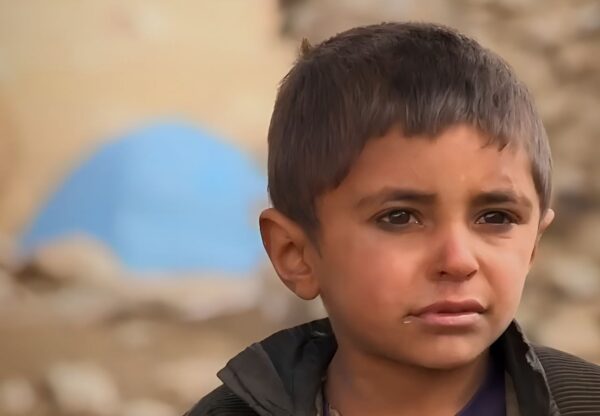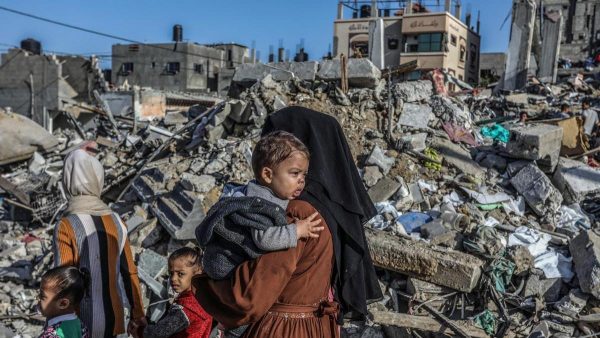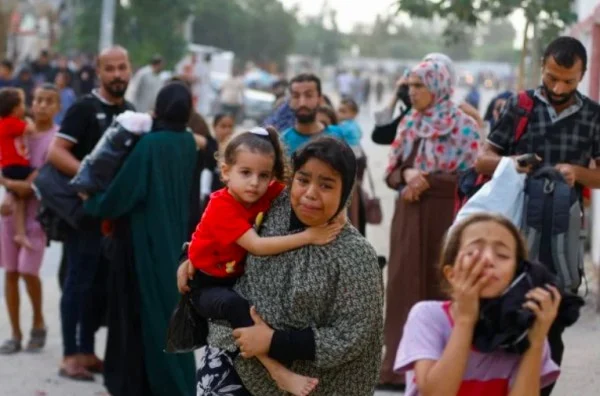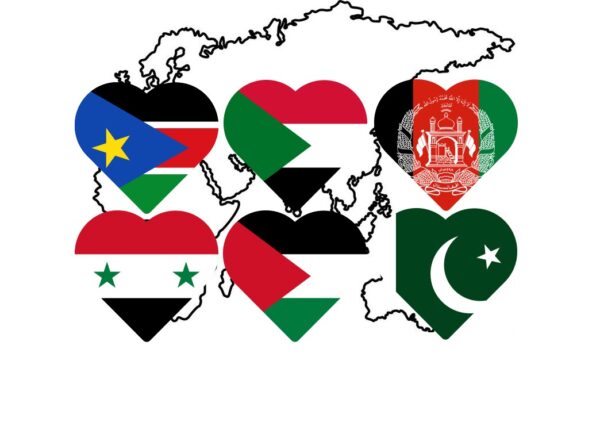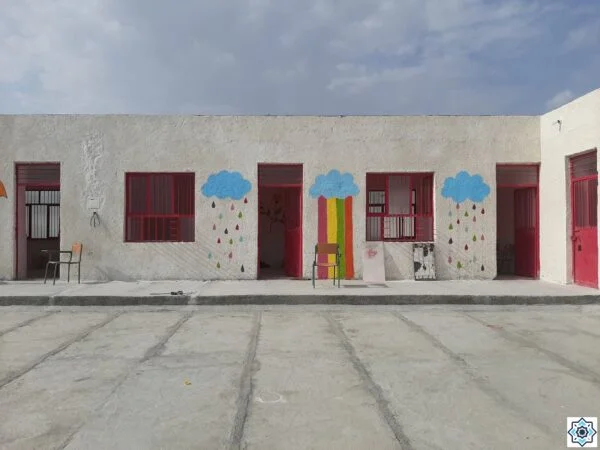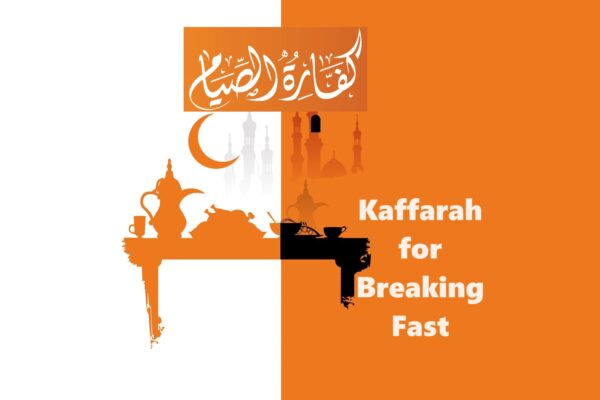Mubahila means invoking the divine curse to prove rightfulness and occurs between two parties who both claim to be right. This term refers to an event in Islamic history in which the Prophet (peace be on him and his household) suggested seeking God’s curse after a debate with the Christians of Najran and their not accepting Islam and they agreed to this suggestion. Despite this, the Christians of Najran refrained from this act on the promised day.
According to the Shiite belief, the event of the Prophet’s mubahila not only shows the rightfulness of the original invitation of the Prophet (peace be on him and his household) [to Islam] but also proves the superiority of his companions (Imam Ali, Lady Fatima, and Imam Hasan and Husayn peace be on them) in this event. Based on this, the Shiites believe that Imam Ali (peace be on him) is the soul of the Prophet according to the verse of mubahila.
The Story of the Mubahila of the Holy Prophet (peace be on him and household) with the Christians of Najran (Najran is a small city between Aden and Hadramout in a mountainous region) This event has been recorded in some historical and many exegetic sources of both the Shiite and the Sunni.
During the last years of the Prophet’s life, the voice of Islam had reached all corners of the world during that time. The Holy Prophet (peace be on him) strived to spread Islam by sending letters to the heads of countries and different regions. One of these letters was one that was sent to the Christians of Najran in 10 AH.
The letter states: In the name of the God of Ibrahim and Ishaq [Isaac] and Yaqoub [Jacob] (this is a letter) from Muhammad, the Prophet of God to the bishop of Najran. I praise the God of Ibrahim, Ishaq, and Yaqoub and invite you towards the worship of God [and away] from the worship of “servants”. I invite you to leave the mastership of the servants of God and come under the mastership of God. and if you do not accept my invitation, you must pay taxes to the Islamic government (and in return for this small sum it will defend your life and wealth) and otherwise, you are notified of danger.
Some Shiite historical sources add that verse 64 of the chapter of Aal Imran was also a part of this letter. In this verse God states the following: “Say, ‘O People of the Book! Come to a common word between us and you: that we will worship no one but Allah, that we will not ascribe any partner to Him, and that some of us will not take some others as lords besides Allah.’ But if they turn away, say, ‘Be witnesses that we have submitted [to Allah].’”
After receiving the Christians of Najran started consulting [one another] and decided that a group of their elders would be sent to Madina to debate and discuss with the Holy Prophet (peace be on him and his household). Ibn Hisham writes: A group of Christians of Najran composed of 60 people entered Madina to see the Propet and debate with him. Among them, there were 14 and among the 14 there were three who held the position of being the head and elders over others and were respected by the Christians of that time. One had the title of “Aqib” and was named “Abdul Masih”. Another had the title of “Sayyid” and his name was “Iyham”, while the third was a bishop known as “Abu Haritha b. Alqama”.
The Holy Prophet (peace be on him and his household) invited them to Islam; they did not accept and much dialogue and discussion followed. The Christians disputed with the Prophet regarding the rightfulness of their religion. They said: Isa (Jesus) is God and another group considered him to be the son of God, while a third group believed in trinity, that is, they believed in three Gods: the father, the son, and the holy spirit. Ibn Hisham writes: “The Christians said to the Prophet: If Jesus (peace be on him) is not the son of God, then who is his father? Verses of the Quran were revealed and explained his creation to be similar to the creation of Adam, the father of humankind.” The dispute and discussion between the Christians of Najran and the Holy Prophet (peace be on him and his household) continued. The Prophet refuted their words and replied to their questions with clear arguments and conclusive proofs.
However, the Christians still denied the truth and insisted on their beliefs. At this time, verse 61 of the chapter of Aal Imran was revealed and the Christians on Najran were invited to mubahila. The verse states: “Should anyone argue with you concerning him, after the knowledge that has come to you, say, ‘Come! Let us call our sons and your sons, our women and your women, our souls and your souls, then let us pray earnestly, and call down Allah’s curse upon the liars.’”
When the Christian representatives heard the suggestion of mubahila from the Prophet (peace be on him and his household), they looked at each other in amazement. They wanted time to think and consult in this regard. When the Christians returned to their elders and consulted them, their bishop said: tomorrow look if Muhammad (peace be on him and his household) comes with his family and children, then abstain from mubahila and if he comes with his companions, then do mubahila because there is nothing he can do.
According to the verse of mubahila, the Prophet must bring his children and women and those who were like himself along with himself and they were none other than Hasan b. Ali (peace be on him), Husayn b. Ali (peace be on him), Fatima al-Zahra (peace be on her), and Ali b. Abi Taleb (peace be on him).
Fakhr al-Din Razi, the author of the exegesis Mafatih al-Ghayb, expresses rightfulness in the following way when he comes to the verse of mubahila: when the Prophet (peace be on him and his household) came to the place of mubahila, he was wearing a cloak of black hair and was carrying Husayn (peace be on him) and holding the hand of Hasan (peace be on him); Fatima and Ali (peace be on them) too were following behind him. At that time, the Prophet said to them: “when I raise hands to curse [them], say amen.” Then at that very place of mubahila, the Prophet took Hasan, Husayn, Ali, and Fatima (peace be on them) under his cloak and recited the verse of tat-hir [verse 33 of the chapter of al-Ahzab] and in this way, he also introduced his Ahlulbayt [people of the house] and introduced their position to others.
Suddenly the illuminated face of the Prophet (peace be on him and his household) along with four other members of his family became visible to the Christians of Najran and they all looked at each other in amazement and shock. They were very surprised that he had brought his infallible dear ones and children and his only and unique daughter to the scene of mubahila and they all said that this man has a firm belief in his invitation and prayer. The bishop of Najran said: “I see faces which, once they raise their hands in prayer and ask God to dislodge the biggest mountain from their place, they will be dislodged and it is absolutely not right that we do mubahila with these illuminated faces and virtuous people because it is not unlikely that we will all be destroyed and the range of punishment extend and include all the Christians of the world and not one Christian be left in the world.
Seeing the situation, the group of representatives consulted with each and unanimously decided they would definitely not enter into mubahila and were willing to pay a sum every year as taxes; the Prophet (peace be on him and his household) expressed his satisfaction and it was decided that every year, in return for a small sum, the Christians would enjoy the benefits of the Islamic government.
It has been narrated that after a while, this event led to the conversion to Islam of two of the Christian leaders known as Sayyid and Aqib. By divine command, the mubahila between the Christians of Najran and the Holy Prophet (peace be on him and his household) demonstrated the rightfulness of the religion of Islam. Since the Christians of Najran had discovered this rightfulness, they were not ready to do mubahila. Apart from this, with the revelation of the verse of mubahila, once again one of the virtues of the Ablulbayt (peace be on them) was explained in the language of the Quran and the elevated position of the household of purity and infallibility was introduced to humankind.
The Place and Time of Mubahila Mubahila took place on the 24th of Dilhajj and in a region of Najran, which in the time of the Prophet, was outside the city of Madina and today it is within the city and a mosque has been build in that place known as Masjid al-Ijabah. The distance between this mosque and the Mosque of the Prophet (Masjid an-Nabi) is about two kilometers.
The region of Najran is one of the thirteen regions in the southwest of Arabia and has good weather. It is located in the border region between Saudi Arabia and Yemen. The entire area of this region is 360,000 kilometers with a population of more than 620 000 people. The city of Najran is at the center of this region. This region was a Christian populated area during the time of the Prophet and the Christian citizens continued to live there with the support of foreign Christian countries, North Africa, and the Roman emperor. The most famous of the historical artifacts of this region is “Ukhdudiya” which has been mentioned in the Quran in the chapter of al-Buruj regarding the People of Ukhdud. And even today the monuments of “Ukhdud” are among the visited monuments by tourists and researchers of historical artifacts.
The Messages of the Event of Mubahila There are many messages in the event of mubahila; including the following:
1. If a person believes in the goal, he is ready to place himself and his closest family members in danger
2. The last trump card and weapon of a believer is supplication
3. In gatherings of prayer, we should also take children along with us
4. Seeking help from the unseen comes after employing normal abilities
5. In supplication, the state of the people of prayer is important not their number. The group that was going to do mubahila was not more than five people
6. Men and women have a place beside each other in different religious scenarios
7. Ali b. Abi Taleb is the soul of the Prophet of God (peace be on him and his household)
8. The Ahlubayt of the Prophet are those whose prayers are answered
9. The children of a daughter, just like those of a son are one’s own children. Therefore, Imam Hasan and Husayn (peace be on them) are the children of the Prophet
10. Referring to the authentic Islamic sources shows that the following prominent personalities who have cited this event are the following: (Tafsir al-Namoona)
• Muslim b. Hujjaj Neyshapuri, the author of Sahih Muslim, one of the six trusted books of the Ahl al-Sunna, vol. 7, p. 120 (Muhammad Ali Sabih print, Egypt)
• Ahmad b. Hanbal in Musnad, vol. 1, p. 185 (Egypt print)
• Tabari in his famous exegesis under verse 61 of Aal Imran, vol. 3, p. 192 (Maymaniya print, Egypt)
• Hakim in Mustadrak, vol. 3, p. 150 (Haydarabad Dakan print)
• Hafiz Abu Naim Isfahani in Dalaʾil al-Nubuwwa, p. 297 (Haydarabad Dakan print)
• Fakhr Razi in his famous exegesis, vol. 8, p. 85 (al-Bahiyya print)
• And many more sources and authors such as Ibn Athir, Ibn Jowzi, Alusi, Tantawi, Zamakhshari, etc.
Wikifeqh.ir
Iribnews.ir
Translator: Rashed


